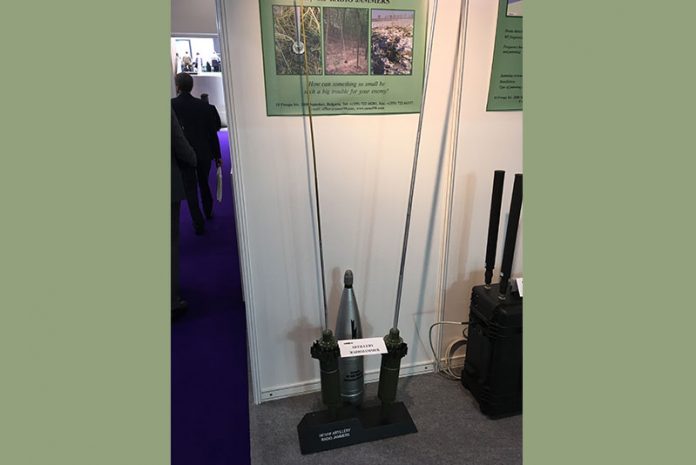
Has a US Army initiative to develop artillery shells capable of jamming hostile communications already entered the prototype stage?
The US Army has awoken to the potential of artillery shells which can emit RF (Radio Frequency) jamming signals. Back in 2016 the force revealed via a Small Business Innovation Research (SBIR) solicitation issued by the US Department of Defence interest in artillery that can deliver “non-destructive, non kinetic RF effects.” The rationale behind the initiative was to provide a jamming package enclosed within a 155mm shell which could be directed against hostile communications systems, be those civilian or military, jamming them, but not necessarily damaging their accompanying physical infrastructure. Such materiel would be especially attractive for operations where the army must neutralise hostile military or civilian radio, wireless or GSM (Global System for Mobile Communications) networks but cause the minimum of physical damage. The original solicitation stated that the artillery would be used to neutralise “an adversary’s underlying industrial, civil and communications infrastructure.” This seems to indicate that the intended target of such jamming would be civilian/military critical infrastructure, as opposed to use on the battlefield. In a counter-insurgency context one or more of these shells could be fired into an area where insurgents are known to be prior to an operation taking place so as to neutralise their communications.
Starshel
The use of RF jamming shells is not new. The Bulgarian Army pioneered them in the mid-1980s. Samel 90 now markets these R-045/046 Starshel (Hornet) 122mm and 125mm shells which cover a waveband of 1.5 megahertz/MHz to 120MHz, taking in the upper part of the High Frequency waveband (three megahertz to 30MHz) and the lower-to-mid part of the Very High Frequency (VHF: 30MHz to 300MHz) waveband. Five specific shells within the R-045 series cover segments of the 20MHz to 100MHz waveband, with eight specific R-046 rounds covering parts of the 1.5MHz to 120MHz waveband. Open sources state that these shells have a jamming radius of 700 metres (2,296 feet), using a one metre (three feet) antenna which deploys when the shell hits the ground, with sufficient battery power to perform one hour of jamming. The shells have a range of three kilometres/km (1.9 miles) up to 16.5km (10.3 miles).
The SBIR solicitation stressed that the programme was to follow three phases: The first would see the design of a jamming payload which could outfit a 155mm shell, with the intention to later miniaturise these jamming payloads so that several could be accommodated in one shell, presumably to increase the number of bandwidths which can be attacked. Phase 2, meanwhile, covers the development of the phase one technology into a prototype which can be used for tests and evaluation. Finally, phase three covers the transition of the shell from a prototype into a production system. It can be assumed with some confidence that development of the shells is continuing and that prototype testing may have even commenced. That being said the US Army is reluctant to discuss the programme telling Armada Analysis that it cannot provide any further details due to operational security. A US army spokesperson told Armada Analysis that “achieving overmatch against potential enemy combatants saves lives, deters war and most importantly, provides US forces the ability to win decisively the wars of today and tomorrow.”
Capabilities
Given the original remit of the initiative, it would be reasonable to assume that any artillery shells developed as a result of the programme could cover a 30MHz to six gigahertz waveband. This would ensure that they would have the potential to jam all military and civilian communications transmitting across VHF and Ultra High Frequency wavebands. It would be imperative that such electronic attack payloads can perform jamming in such a fashion to ensure that friendly communications are not adversely affected. Given the preference for insurgents to use GSM transmissions to activate IEDS, the shell’s jamming payloads may have the added benefit of neutralising such devices within a specific area. Regarding the lack of information concerning the project, at the operational and tactical levels it make sense to keep one’s cards close to one’s chest regarding the status of such technology. It is certain, however, that an artillery-delivered jamming capability would be an important addition to a force already performing an energetic and overarching enhancement of its EW capabilities.













